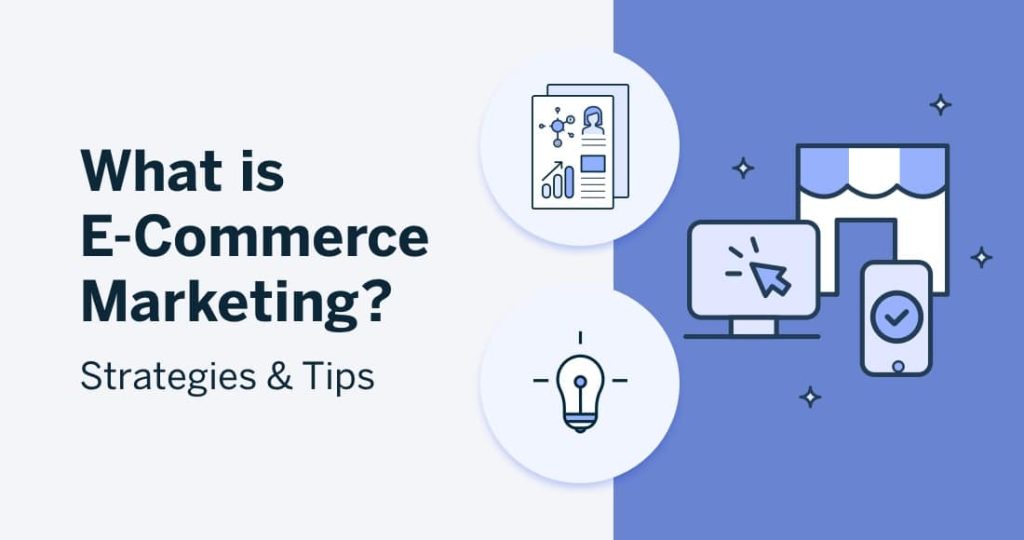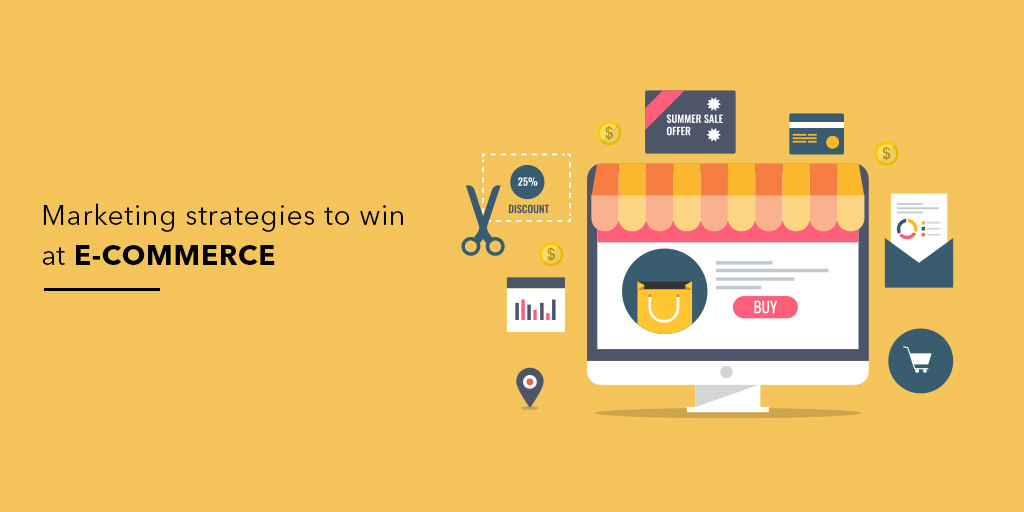Introduction
E-Commerce Marketing, In the fast-evolving digital landscape, e-commerce businesses are continuously looking for ways to stand out and capture customer attention. The blend of effective marketing and strong branding plays a critical role in this pursuit. E-commerce marketing and branding strategies are not just about promoting products—they are about building a cohesive and memorable experience that resonates with the customer, builds loyalty, and drives long-term growth. Whether you’re launching a new e-commerce store or scaling an established brand, mastering these strategies is essential to thrive in an increasingly competitive environment. This comprehensive guide explores the key aspects of e-commerce marketing and branding, offering in-depth insights and techniques to help you achieve sustainable success in the online marketplace. Please visit this.
Understanding The Foundation Of E-Commerce Marketing

E-commerce marketing refers to the methods and tactics used to drive traffic to an online store, convert that traffic into paying customers, and retain those customers post-purchase. It encompasses a wide range of channels, from search engine optimization and email campaigns to social media promotions and influencer partnerships. At its core, e-commerce marketing is about connecting the right product to the right person at the right time through the right channel. The ultimate goal is not just to make a sale but to create an ongoing relationship with customers that leads to repeat business and advocacy.
The Role Of Branding In E-Commerce
E-Commerce Marketing, Branding goes beyond logos and color schemes—it’s the perception people have about your business. A strong e-commerce brand establishes trust, communicates your values, and sets you apart from competitors. In a world where consumers are bombarded with endless choices, branding provides a consistent and emotional experience that helps customers remember and choose your store. E-Commerce Marketing, A good branding strategy includes your brand voice, visuals, mission, customer service philosophy, and even your packaging and delivery experience. In e-commerce, where face-to-face interactions are limited, branding becomes the personality that bridges the gap between your business and the buyer.
Creating A Compelling Brand Identity
The first step in developing an effective branding strategy is defining a clear and compelling brand identity. This involves identifying your target audience, understanding their needs, and crafting a brand that speaks directly to them. Your brand identity should be reflected in your website design, tone of voice, product descriptions, and customer interactions. Consistency across all touchpoints reinforces recognition and trust. For example, if your brand focuses on sustainability, your messaging, visuals, packaging, and even shipping methods should align with that value. Every interaction with the customer is a chance to reinforce your identity and deepen the emotional connection.
Seo And Content Marketing For E-Commerce
Search engine optimization is one of the most powerful tools in e-commerce marketing. By optimizing your product pages, blog content, and metadata, you can attract organic traffic from search engines without relying solely on paid ads. Keyword research is essential to understand what potential customers are searching for and to tailor your content accordingly. Product titles, descriptions, and image alt texts should all be optimized for relevant keywords. Additionally, content marketing through blogs, guides, and video tutorials not only drives traffic but also builds authority in your niche. Educating your customers builds trust and positions your brand as a valuable resource, increasing the likelihood of conversion and loyalty.
Social Media Marketing And Brand Engagement
Social media platforms offer a dynamic space for e-commerce businesses to market their products, engage with customers, and reinforce their branding. Platforms like Instagram, Facebook, TikTok, and Pinterest allow you to showcase your products visually, share behind-the-scenes content, promote user-generated content, and run targeted ad campaigns. E-Commerce Marketing, The key to social media marketing is consistency, authenticity, and interaction. Responding to comments, reposting customer photos, and telling your brand story through engaging visuals help humanize your business and foster community. Social media also serves as a testing ground for marketing ideas and promotions, offering real-time feedback from your audience.
Email Marketing As A Relationship Builder
Email marketing remains one of the most cost-effective and high-converting tools in e-commerce marketing. It’s not just about sending promotions; it’s about nurturing customer relationships. Building an email list through sign-up forms, pop-ups, or lead magnets gives you a direct line of communication with potential buyers. Welcome emails, cart abandonment follow-ups, product recommendations, and exclusive offers can be personalized based on customer behavior. A well-structured email marketing strategy reinforces brand loyalty, encourages repeat purchases, and increases lifetime customer value. Automated email flows also ensure that your brand remains top-of-mind without requiring manual effort for every message.
Influencer And Affiliate Marketing

E-Commerce Marketing, Leveraging influencers and affiliates can rapidly expand your brand’s reach and credibility. Influencers with a loyal following can introduce your brand to new audiences in a trustworthy and authentic way. Choosing influencers who align with your brand values is crucial—they become an extension of your brand. Whether through sponsored posts, unboxings, or reviews, influencer content can drive traffic and conversions while enhancing your brand’s image. Affiliate marketing works similarly, rewarding individuals or websites for driving sales through trackable links. These partnerships allow you to tap into niche audiences with minimal upfront costs, making it a highly scalable marketing strategy.
Conversion Rate Optimization And Customer Journey Mapping
Driving traffic to your e-commerce store is just one part of the equation. Converting that traffic into paying customers requires thoughtful design, user experience, and messaging. Conversion rate optimization (CRO) involves analyzing the customer journey, identifying drop-off points, and testing improvements. Simple changes like optimizing your call-to-action buttons, improving product page layouts, or speeding up site loading times can significantly boost conversions. Understanding how users move through your site allows you to craft a seamless and intuitive shopping experience that supports both sales and branding goals. A smooth journey builds trust, while friction can deter even the most interested customers.
Retargeting And Customer Retention
Acquiring new customers is important, but retaining them is even more valuable. Retargeting campaigns remind previous visitors of your products, encouraging them to return and complete their purchases. These ads, often served on Facebook, Instagram, or the Google Display Network, keep your brand top-of-mind and increase the likelihood of conversions. E-Commerce Marketing, Loyalty programs, exclusive discounts, and early access to new products are great tools to reward repeat customers. A strong retention strategy ensures that each customer provides long-term value, which is more cost-effective than constant acquisition. Additionally, satisfied customers become brand advocates, promoting your business through word-of-mouth and reviews.
The Power Of Storytelling In E-Commerce Branding
In a saturated market, your story can be the differentiator. Storytelling in e-commerce branding helps you emotionally connect with your audience, making your brand more memorable and relatable. Sharing your origin story, your values, your mission, and even your team behind the scenes builds transparency and authenticity. Customers want to buy from brands they resonate with. Whether it’s a founder’s journey or the craftsmanship behind your products, a compelling narrative strengthens your brand’s emotional appeal and encourages loyalty. Storytelling isn’t limited to text—it can be communicated through video, imagery, and even product packaging.
User-Generated Content And Social Proof
User-generated content (UGC) is a powerful form of social proof that reinforces trust in your brand. Encouraging customers to share photos, reviews, or testimonials helps build a sense of community and authenticity. Featuring UGC on your product pages, social media, or marketing emails boosts credibility and increases conversions. Consumers trust other consumers more than branded content. Positive reviews and real-life usage photos provide reassurance and reduce hesitation. UGC also creates a feedback loop—happy customers generate content, which in turn attracts new customers, fueling brand growth organically.
Personalization And Customer Experience
Modern consumers expect a personalized experience, and e-commerce brands that deliver this gain a significant competitive edge. Personalization can range from product recommendations and dynamic website content to personalized emails and loyalty rewards. Using customer data to tailor the shopping experience shows that you understand and value each individual’s preferences. A personalized approach increases engagement, conversion rates, and customer satisfaction. Integrating AI and machine learning can help automate this process, delivering real-time, personalized experiences across multiple channels. Personalization turns casual browsers into loyal buyers by making every interaction feel relevant and valued.
Utilizing Data And Analytics For Strategic Growth
E-Commerce Marketing, Data is the backbone of e-commerce marketing and branding success. Every interaction—whether a click, view, purchase, or bounce—provides insights into your customer’s behavior. Using tools like Google Analytics, Facebook Ads Manager, and CRM platforms allows you to track campaign performance, user flow, conversion rates, and customer demographics. Data-driven decisions help you allocate budgets effectively, identify underperforming areas, and refine your messaging. By continuously analyzing your data, you can stay agile and adjust your strategies in real time. Data also informs your branding efforts, revealing what resonates most with your audience and where your brand perception stands.
Mobile Optimization And Responsive Design
With mobile commerce on the rise, ensuring that your e-commerce store is fully optimized for mobile devices is non-negotiable. Responsive design, fast loading times, easy navigation, and mobile-friendly checkout processes significantly influence conversion rates. E-Commerce Marketing, Your marketing strategies, from email campaigns to social media ads, must be mobile-optimized to ensure seamless user experiences. A brand that performs well on mobile builds trust and convenience, enhancing customer satisfaction. Investing in mobile-first strategies ensures that you capture and convert the growing segment of mobile shoppers who expect flawless functionality on the go.
Expanding Through Marketplaces And Multichannel Selling

While having your own e-commerce website is critical for brand control, expanding your presence through marketplaces like Amazon, Etsy, and Walmart can provide additional visibility and sales channels. Multichannel selling allows you to meet customers where they already shop. E-Commerce Marketing, Each channel should still reflect your brand identity, even if the platform imposes design limitations. Managing inventory, pricing, and messaging across multiple platforms requires coordination, but the payoff is broader reach and diversified revenue streams. Integrating your branding into every channel ensures consistency and recognition, regardless of where the sale occurs.
Adapting To Trends And Consumer Behavior
E-Commerce Marketing is a dynamic space that constantly evolves with technology, consumer expectations, and global trends. Brands that remain agile and willing to adapt maintain their competitive edge. Trends such as voice search, AR shopping experiences, social commerce, and sustainability all influence how brands market and sell. Staying attuned to these changes and integrating them into your marketing and branding efforts keeps your business relevant. Engaging with your community, conducting market research, and following industry publications can help you anticipate shifts and seize opportunities ahead of the curve.
Conclusion
E-commerce marketing and branding strategies are the cornerstone of building a successful and sustainable online business. Marketing drives visibility and sales, while branding cultivates trust, loyalty, and long-term customer relationships. From SEO and content marketing to social media, influencer partnerships, and personalization, each strategy plays a vital role in shaping the customer experience. A strong brand identity, paired with data-driven marketing tactics and an unwavering focus on the customer, ensures that your e-commerce business not only survives but thrives in an increasingly competitive digital world. By continuously optimizing your approach, leveraging technology, and staying true to your brand story, you can build a business that attracts, delights, and retains customers for years to come.








